Info Type
View Option
Sort by Month
Sort by Category
Back
This text has been translated by auto-translation. There may be a slight difference between the original text and the translation. (Original Language: 日本語)
2022/10/4 - 2022/12/11 / 千葉県 佐倉市 / Other

| Venue | National Museum of Japanese History, Special Exhibition Room A |
|---|---|
| Address | 285-8502 千葉県 佐倉市 城内町117 |
| Date | 2022/10/4 - 2022/12/11 |
| Time | 9:30 minute(s) - 16:30 minute(s) |
- [Time detail]
・ Admission until 30 minutes before closing.
・ Closed : Mondays ( If Monday is a holiday, the museum will be open and closed the following day )
- [Getting here]
By train】
・ 15 min. walk or 5 min. bus ride from Keisei Sakura Station on Keisei Electric Railway
・ 15 min. bus ride from Sakura Station on East Japan Railway
[By car]
・ 15 min. from Yotsukaido IC or Sakura IC on Higashi-Kanto Expressway
- [Venue detail]
National Museum of Japanese History 117 Jonouchi-cho, Sakura-shi, Chiba
International Exhibition "Kaya - A History of a Kingdom in Ancient East Asia -"
By experiencing the history of Kaya and the history of exchange between Kaya and Japan, we will think about the exchange between Japan and Korea that has continued from ancient times to the present and into the future.
- [Contact]
- 050-5541-8600 ( Hello Dial )
- [Registrant]国立歴史民俗博物館
- [Language]日本語
- [TEL]050-5541-8600
- Posted : 2022/08/10
- Published : 2022/08/10
- Changed : 2022/08/15
- Total View : 591 persons
- Find local business with Town Guide
-
-
(0438) 23-3711ちば南部地域若者サポートステーション
-
-
- ♪ Welcome from complete beginners with n...
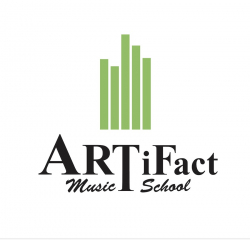
-
♪ Complete beginners with no experience in music are welcome ♪ "I want to sing better," "I want to play my favorite songs on the piano," "I want to be able to play the guitar," "I want to play freely ...
(03) 5244-5221アーティファクト ミュージックスクール 木更津ルーム
-
- Shangri-La is a private salon in Konanda...

-
Konandai Beauty Power Spot. Eyelash extensions ・ Facials ・ Myofascial bone manipulation ・ Power tree ・ Myofascial release ・ Relaxation ・ Lymphatic drainage of toxins. Serious skin quality improvement...
(080) 3359-6482Shangrila
-
- Kisarazu ・ Kimitsu ・ "Shoin Juku," popul...

-
Juku Navi - "No.1" Gakushu-juku Review Ranking "No.1" Independent Study Guidance Shoin Juku You can learn 5 subjects, unlimited attendance, and learn until you understand 100% ! Since its establish...
(0439) 27-0263松陰塾 君津南子安校
-
- We are an English conversation school in...

-
Strong English School celebrated its second anniversary in March 2020 and moved to the easily accessible Minanoba location in July of the same year. From infants to adults, students can choose a les...
(0438) 38-5506STRONG ENGLISH Learning Center
-
- Tree trimming in Kimitsu and neighboring...

-
Do you have a tree you are having trouble cutting down or a weed treatment problem ? Leave it to Marutto ! Lumberjack Shokai offers a wide range of services from cutting down a single tree in your yar...
(0439) 32-2746木こり商会
-
- Opening in June 2023] 1 minute walk from...

-
Plaza Individualized Educational Institute Kisarazu ・ If you are looking for a preparatory school for entrance examinations, Plaza Individualized Educational Institute Kisarazu ! We will guide you to ...
(0438) 20-0333プラザ個別指導学院 木更津教室
-
- Kisarazu Station East Exit ・ 5 min. walk...

-
Conger eel from Futtsu ・ white mil. Katsuura bonito ・ horse mackerel. Sea bream from Kamogawa. Kinmedai from Choshi. Clams ・ Stupid clams ・ ・ ・ from Kisarazu Banzu tideland. Seasonal Kaiseki course wi...
(0438) 22-4488四季味宴席たく
-
- We sell candy apples that look like jewe...
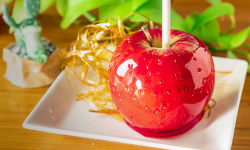
-
candy cort's candy apples are often seen at festivals. candy cort has a wide variety of candy apples, including chocolate-covered ones and "blue apple candy" that looks amazing ! Please check the iden...
candy cort(キャンディコート)
-
- Wellness Nursery School Kimitsu is looki...

-
Wellness Nursery School Kimitsu is looking for childcare workers to work with us ! Please feel free to contact us for a tour of the school, job application, or any other inquiries.
(0439) 32-1150ウェルネス保育園君津
-
- The cemetery is conveniently located nea...
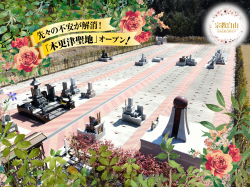
-
Kisarazu Seichi Cemetery is a new cemetery opened in July 2028 on a hill in Nakao, Kisarazu City. It is located 4 minutes from Apita Kisarazu Store, 5 minutes from Kisarazu Kita Interchange, and 12 m...
(0438) 38-3556木更津聖地霊園
-
- [ Kisarazu Dance School ・ Shuwakai ] Cou...
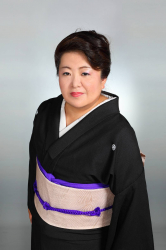
-
We aim to create a friendly atmosphere with smiling faces, not stiff and formal, but with an emphasis on harmony. In addition, we teach simple dressing and tips and methods to wear kimono comfortably...
(090) 3532-2039秀和会(創作舞踊)
-
- We are a salon offering total support wi...
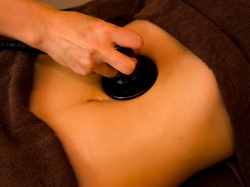
-
We are a salon offering total support with the theme of "Health, Beauty and Healing" in Cain's Home Store in Aoki, Futtsu City. We offer reasonable body care & facial esthetics. Customized menus are a...
(0439) 87-2131トータルリラクゼーションAju
-
- We provide meticulous care for each pati...
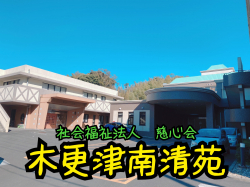
-
This facility includes a special nursing home, short stay, day service, in-home care support office, and care house. While providing spacious living space and friendly services, we strive to enable t...
(0438) 30-9611社会福祉法人 慈心会 木更津南清苑
-
- We are a dental clinic located in Kisara...

-
Our clinic provides world-standard treatment using CT and microscopes. Through word of mouth, our patients come from as far away as Futtsu City, Sodegaura City, Kamogawa City, Minamiboso City, and Kat...
(0438) 38-4854陽光台ファミリー歯科クリニック






This exhibition will also consider the transition of exchange between Kaya and Japan. Kaya was one of the societies with which the Yamato interacted most closely. Through exchanges with Kaya, the Yamato acquired advanced information, techniques and tools of the time and established them as part of their own culture. These included hard pottery called Sue ware, iron tools, metalwork, horse breeding, irrigation, and cooking utensils such as steamers and new heating ・ and kitchen facilities ( Kamado ). The 5th century, when this movement was most active, is sometimes called the "century of technological innovation. In order to understand the history of Japan, it is necessary to look at the history of Kaya as well.
Through this exhibition, visitors will experience the history of Kaya across the sea, and will be reminded of the longstanding exchange between the two regions of Japan and Korea that continues today and into the future.
Co-sponsored by : National Museum of Korean History ・ National Museum of Korea ・ Kyushu National Museum
[Admission]
Adults 1000 yen / University students 500 yen
*Please see also the general exhibition
*No admission fee for high school students and younger.
*High school and university students must show their student ID.
( The same applies to vocational school students and other students who are equivalent to high school and university students.
*Present the ticket stub and you can enter the Kurashi-no-Botanical Garden on the same day.
Show the stub from the Botanical Garden and receive a discount for admission to the Museum on the same day.